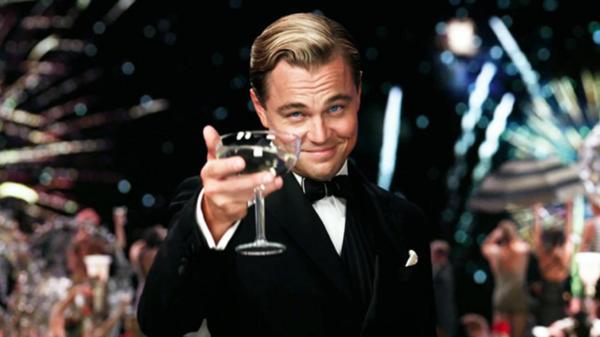Romeo and Juliet and Moulin Rouge showed us that Australian director Baz Luhrmann can throw a hell of a party. Now, after the epic drabness of Australia he pulls the stereo out of storage and does it again. The best scene in this fast and furious stab at F Scott Fitzgerald’s 1925 state-of-the-nation novel comes early, as we gatecrash a wild shindig at the Long Island home of filthy rich socialite Jay Gatsby (Leonardo DiCaprio). Gatsby’s wide-eyed neighbour Nick Carraway (Tobey Maguire) cuts through the layers of flappers and frippery and meets his elusive host amid the throng. The scene is Luhrmann at his best: swirling cameras, mad excess, look-at-me costumes and big musical statements.
In Luhrmann’s world, everything is bigger, noisier and brighter than the far-from-humdrum universe of Fitzgerald’s story. That’s fine when the party’s raging, but when the music stops and the lights go up, dawn casts an unflattering glow on the film’s quieter, more intimate moments.
One of the niggling problems with the film is that it never knows whether it’s about the doomed love between Gatsby and flighty Southern belle Daisy (Carey Mulligan) who lives across the water with her brutish husband Tom (Joel Edgerton), or about the longing, questioning, horrified gaze of Carraway. He’s an outsider in a rarefied world (comparable to Charles Ryder in Brideshead Revisited), and arguably that’s where the real emotional pull of Fitzgerald’s story lies. Yet there’s a whole swathe where Carraway recedes from view and Luhrmann focuses on the push and pull between Daisy and Gatsby.
Carraway, of course, is the book’s narrator, and Luhrmann tries to hang on to his perspective by creating a framework in which Carraway spills all to a psychiatrist about his encounters. It’s an admission of failure – or at least that there’s a major problem to solve in adapting this novel. We hear Carraway’s narration. We even, occasionally, see text from the book. But it’s the age-old page-to-screen issue: we’re witnessing all this from the outside in, rather than the inside out.
What Luhrmann makes intoxicating is a sense of place – the houses, the rooms, the city, the roads – and the sense that all this is unfolding in a bubble like some mad fable. Where he falters is in persuading us that these are real, breathing folk whose experiences and destinies can move us.

